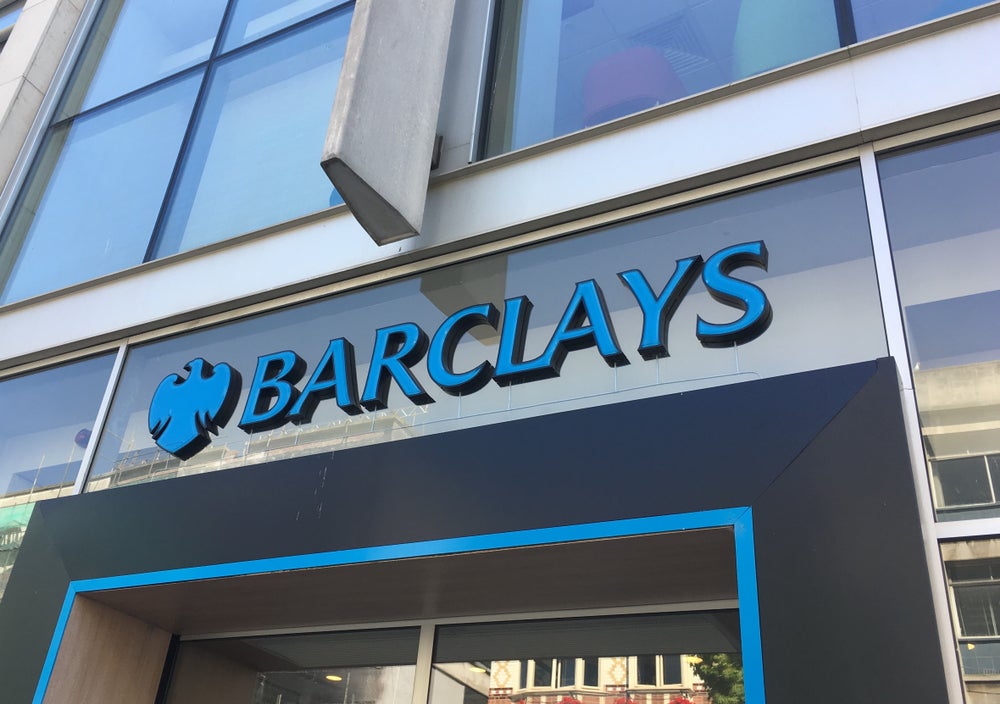Large banks in Europe have taken action on environmental, social and governance (ESG) issues, but so far there has been little focus on consumer banking. The upcoming COP26 climate change conference, however, is set to change that and ESG could be coming soon to a retail bank near you. Jane Cooper reports.
Tackling climate change, reducing global warming and achieving net-zero carbon emissions will dominate the upcoming United Nations climate change summit – dubbed COP26 – in Glasgow in November. For banks it is an opportunity to tout their environmental, social and governance (ESG) credentials, but so far it seems that climate responsibility has only been an issue at the group level, and only institutional, or wholesale, banking has been impacted. That could soon change, however.
COP26 retail banks: ESG rising up the retail banking agenda
“ESG now is mainly a wholesale banking topic, but it is coming to retail banking,” says Miklos Dietz, a Senior Partner who leads Global Banking Strategy and Innovation at McKinsey.
So far it may seem that the action that retail banks have taken on climate responsibility has been patchy. However, Paul Chisnall, Director, Sustainability at UK Finance, argues that COP26 will “sharpen the mind” for the industry. “Leading up to COP26 I think we will see products coming to market and initiatives that are already out there being promoted better,” he says.
Chisnall puts the recent attention on COP26 in perspective and comments that climate responsibility is something that institutions have been working on for a number of years, particularly since Mark Carney – then the governor of the Bank of England – gave his ‘Breaking the tragedy of the horizon’ speech in 2015. In it, he urged banks and insurance companies to take action: “Once climate change becomes a defining issue for financial stability, it may already be too late,” Carney warned.
Since then, the building blocks for the industry’s action have begun to be put in place, explains Chisnall, starting with voluntary adherence to the recommendations of the Task Force on Climate-Related Financial Disclosures (TCFD). Also, in the UK, for example, the Prudential Regulation Authority in April 2019 published its expectations for how financial institutions should approach the financial risks from climate change.
How well do you really know your competitors?
Access the most comprehensive Company Profiles on the market, powered by GlobalData. Save hours of research. Gain competitive edge.

Thank you!
Your download email will arrive shortly
Not ready to buy yet? Download a free sample
We are confident about the unique quality of our Company Profiles. However, we want you to make the most beneficial decision for your business, so we offer a free sample that you can download by submitting the below form
By GlobalDataNet Zero Banking Alliance, Glasgow Financial Alliance for Net Zero launch
Chisnall points to other initiatives, including the Net Zero Banking Alliance (NZBA) and the Glasgow Financial Alliance for Net Zero (GFANZ), both launched on 21 April this year – the day before the Biden Climate Summit.
Does this mean that there have been many high-level climate commitments, but so far this hasn’t really affected retail banking? “To a degree,” says UK Finance’s Chisnall. He believes, however, that “We are on the cusp of a redefinition in the way we look at investment in the economy,” venturing that this may even amount to “a green industrial revolution.”
For that revolution to begin, banks will have to do a lot more than making commitments, and statements to that effect. Dietz at McKinsey explains there is plenty of research to suggest that retail customers care about ESG, but if a financial institution says they are ESG-focused or net zero, that is not necessarily enough. The key, says Dietz, is for retail banks to enable their customers themselves to make a difference. “That is extremely powerful – you can do the right thing and it can still be profitable,” he adds.
He points to McKinsey market research in Europe that found 30% to 40% of the population said they cared about ESG. Then they were asked if they were willing to make a sacrifice – in terms of fees or rates, for example – and 20% to 30% of the population were prepared to do so if it meant they could make a positive difference.
This echoes what Matt Williamson, VP, Global Financial Services, at consulting firm Mobiquity has found. He comments that companies are gradually realising that sustainability and profitability are not in competition with each other.
In its ‘A Global Benchmark for Sustainable Banking’ report, Mobiquity found that the future will involve a combination of actively green products and services, in conjunction with running a business with an eco-conscience, explains Williamson. “This is very much what consumers are expecting today and recent findings show that customers would switch to banks with sustainable practices,” he adds.
Retail banks financing needs to become more sustainable
At the enterprise level, large banks in Europe are still mapping out what the climate commitments mean in practice, and how this is relevant to retail banking. Denisa Avermaete, Senior Policy Adviser – Sustainable Finance, European Banking Federation (EBF), says banks are reconsidering their business from top to bottom and evaluating where they can have the greatest impact. “There is definitely room for retail banks’ financing of activities to become more sustainable,” she says, adding that retail finance and retail investments are key to meeting the EU’s climate objectives.
Avermaerte says, “For banks to increase their positive contribution, the most impactful way is to help their own clients, from businesses to people, become more environmentally friendly themselves.” All banks, she notes, are considering how to reduce their environmental footprint – which could include, for example, going paperless or installing solar panels on their roofs. “These actions have a marginal impact compared to what banks can achieve through their engagement with customers,” Avermaerte explains.
COP26: retail banks ramp up product sustainability
This is in line with Dietz’s view that financial institutions should do good by helping their customers do good. And this is exactly the approach that Oli Cook, CEO and co-founder of ekko has taken with the start-up’s app, debit card and ecosystem that “turns the tide on climate change”. He argues that financial institutions are the fabric of society – everything runs through financial services – and retail banks and financial institutions have a role to play in empowering people to take climate action. His company ekko is starting that with a debit card.
Cook explains how ekko targets people who care about climate change, but perhaps don’t have the knowledge or the time to work out how they can make a difference. Cook explains they wanted the brand to feel positive, the solution to be tangible, and also be effortless. With the ekko debit card customers can see the impact they are having. Every five transactions will pay for a plastic bottle to be recycled. Every 50 transactions will plant a tree. Also, the customer can see their carbon footprint in the ekko app, along with a personal forest and a bottle count.
The card programme is supported by PrePay Technologies, which has an e-money licence. Cook explains that card will earn interchange, other transaction fees and there will be a charge to feature in the ekko marketplace. Also, there will be a small subscription fee for the debit cardholders, which Cook says will be used to pay for the running of the business. “We do not want to be sustainable and be losing £150 million every year. We need to be financially sustainable and environmentally sustainable,” he says.
And why wouldn’t a retail bank do something similar? “I think we are tackling it differently,” says Cook. “Bigger institutions are trying to make themselves carbon neutral – that is their goal – whereas we are trying to help customers be climate positive. We do not have a legacy of branches and the need to unwind the impact we have had. It’s more about the customers, not about ourselves. It won’t be ‘ekko does this and ekko does that’. It will be about the customers – it will be more powerful,” says Cook.
Sustainability needs to be in the DNA of organisations
Also, Cook argues, sustainability has to be in the DNA of an organisation. If a bank merely offers a green account – without really embedding sustainability into its purpose – consumers are likely to see through it.
For large banks this is easier said than done. McKinsey’s Dietz points out that it is much easier for smaller banks – such as Germany’s Fidor Bank – to stand for ESG than the bigger ones. And this is similar to the findings of the Mobiquity sustainability report, which found that challenger banks often prove more willing and able to adapt to climate commitments.
Progress has already been made by large banks in Europe offering various green products. For example, Barclays and NatWest in the UK are already offering green mortgages that give more favourable rates for energy-efficient homes.
EBF’s Avermaerte points to the innovation that is already occurring in this space, such as credit cards that use artificial intelligence to automatically calculate CO2 emissions of purchases on the card. “This serves a double purpose: on the one hand enhancing clients’ awareness of their own carbon footprint, and on the other building a system which allows banks to help their clients not only reduce their negative impact, but also translate it into positive environmental impacts,” she says.
Dietz points out that because it takes a long time for a large retail bank to transform, this is an ideal way of getting into the space without having to change too much. “Credit cards offer self-selection – you do not have to stop offering your usual products,” he points out. Also, in enabling your customers to do the right thing, he advises, “It’s important not to force it on them. Give them a choice.”
COP26: retail banks to drive sustainability-linked lending
There are likely to be other products available to retail banking customers in the future. EBF’s Avermaete explains how features of sustainability-linked loans, which are currently used for companies, could be leveraged in retail banking. The loans incentivise the borrower to perform against certain ESG criteria, within a certain timeframe, for instance with energy efficiency, greenhouse gas emissions or waste disposal.
On the progress that has so far been made in the industry, Avermaerte comments that in Europe banks are at differing stages of development, but “banks are making a great effort to set climate targets and are working hard to develop products and services that promote the transition to a net-zero economy.”
McKinsey’s Dietz comments, “Retail banking ESG will be a big topic in the coming years.” He comments that the progress made so far has gone largely unnoticed and credit should be given to the financial institutions that have started to move in the right direction.
This article is part of a special series GlobalData Media is publishing in the run-up to COP26, which takes place in Glasgow from 1-12 November 2021. Our focus is on the opportunities and challenges for business of the transition to clean energy and net-zero greenhouse gas emissions. Other articles in this series include:
- Why success at COP26 is vital for business – Energy Monitor
- Carbon market see promise and peril from COP26 – Energy Monitor
- Weekly data: Grids largely overlooked ahead of COP26 – Energy Monitor
- Is FDI making the climate crisis worse? – Investment Monitor
- Companies need to up their climate game. Can FDI help them? – Investment Monitor
- Business professionals see greenwashing as a major issue, but genuine net-zero action doesn’t have to mean red ink – Verdict
- COP26: the three ways a decarbonising business can leave oil and gas – Offshore Technology
- How scope 3 emissions pose the biggest threat to net-zero ambitions – Mining Technology
- Food giants need to pick up pace on greenhouse gas emissions – Just Food
- COP26 – climate change and the automotive sector (1) –Just Auto
- How hospitals and the medtech sector are tackling the climate crisis – Medical Device Network
- What drinks brand owners should know about COP26 – sustainability spotlight – Just Drinks
- COP26 panel – how is apparel tackling climate change? – Just Style
- Inside Cervest’s plan to map the world’s climate risk – Verdict
- Oil rich Norway wants to get on board the COP26 train with cleantech – Verdict







